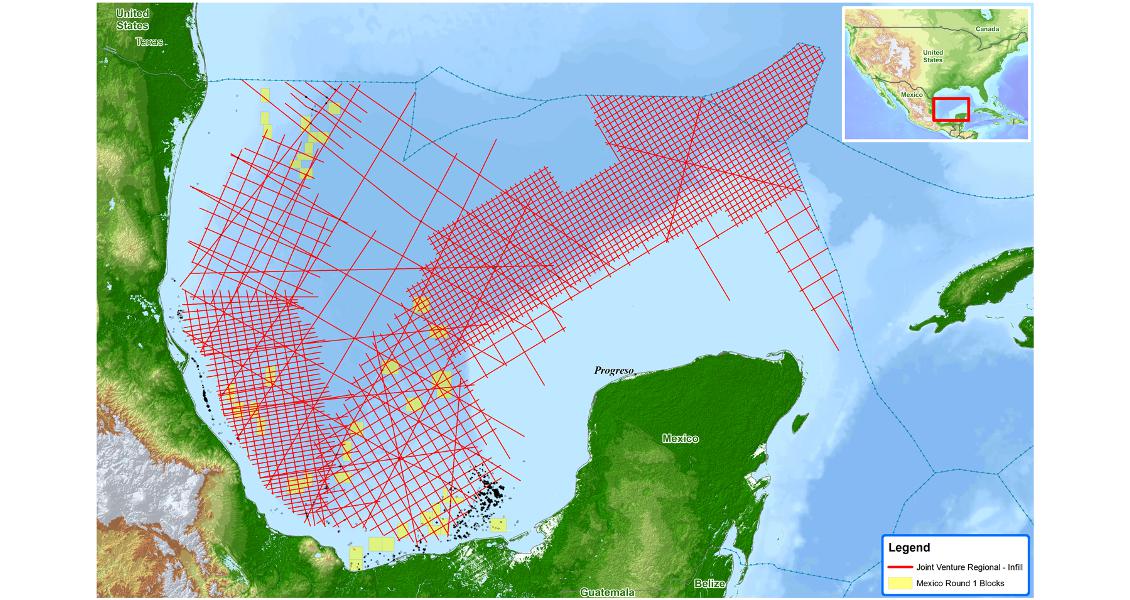Last year the Mexican government passed major reforms which ended the 75-year monopoly held by state-owned Pemex, but the first phase of the much heralded ‘Rondo Uno’ resulted in the award of just two of the 14 blocks on offer. Shallow water Blocks 2 and 7, off the coast of Mexican cities Veracruz and Tabasco respectively, were both awarded in July to a consortium made up of operator Talos Energy, Sierra Oil & Gas, both with a 45% stake, and Premier Oil with 10%. Eight of the blocks on offer did not receive any bids.
Learning Process
The Mexicans are viewing this as a learning process – in fact they purposely kept back some of the more prospective blocks for later, with the promising deepwater area to be included in the fourth phase of the round, probably in 2016. The Phase 1 blocks had an estimated less than 40% chance of exploration success, which may explain the lack of interest in the present climate. However, the process itself may have been partly at fault, considered by many as inflexible with regards to pre-tax profits when accepting bids; four bids were rejected on the basis that they did not meet the minimum profit-sharing requirement, set at 40%.
A number of changes have therefore been made in preparation for the second phase of Round One, due September 30. Five contracts for nine oil fields are on offer and the Mexican National Hydrocarbons Commission estimates they could contain 355 MMboe, with proven discoveries of light crude oil. In order to attract more bidders, there has been a reduction in the required corporate guarantee, which has now been set at 18 times the value of the minimum work commitment required by each contract.
Plenty of Seismic Available
 Schlumberger’s broadband 3D wide-azimuth survey. (Source: Schlumberger)With this promising arena opening up to foreign investment, and expecting better take-up of blocks in forthcoming rounds, seismic companies have been acquiring data and enhancing their offerings in the Mexican Gulf. Spectrum, PGS and Schlumberger are collaborating to acquire 80,000-100,000 km of modern, long-offset 2D data which will encompass all the major hydrocarbon provinces offshore Mexico, includes areas on offer in Rondo Uno.
Schlumberger’s broadband 3D wide-azimuth survey. (Source: Schlumberger)With this promising arena opening up to foreign investment, and expecting better take-up of blocks in forthcoming rounds, seismic companies have been acquiring data and enhancing their offerings in the Mexican Gulf. Spectrum, PGS and Schlumberger are collaborating to acquire 80,000-100,000 km of modern, long-offset 2D data which will encompass all the major hydrocarbon provinces offshore Mexico, includes areas on offer in Rondo Uno.
The acquisition program is designed to allow delivery of the highest-quality data in the shortest timeframe to clients. Mexico is a tremendous investment environment and this collaboration will help support further industry investment into this highly prospective area. Surveying started in June, and final products will be available in November.
Similarly, ION Geophysical announced in August that fast-track pre-stack time migrated (PSTM) data from the first phase of its MexicoSPAN™ program was available, including more than 22,000 km of deep-imaged 2D seismic data.
Also in August, Schlumberger announced that it had launched the industry’s first multiclient wide-azimuth survey offshore Mexico. This covers 80,000 km2 in the Campeche Basin and will be acquired using two fleets of WesternGeco vessels, including Amazon Class, the world’s first purpose-designed 3D seismic vessels. The Campeche Basin has a number of features like near-salt and subsalt structures and complex-faulted and deep-thrusted structures, best imaged with wide-azimuth seismic.





